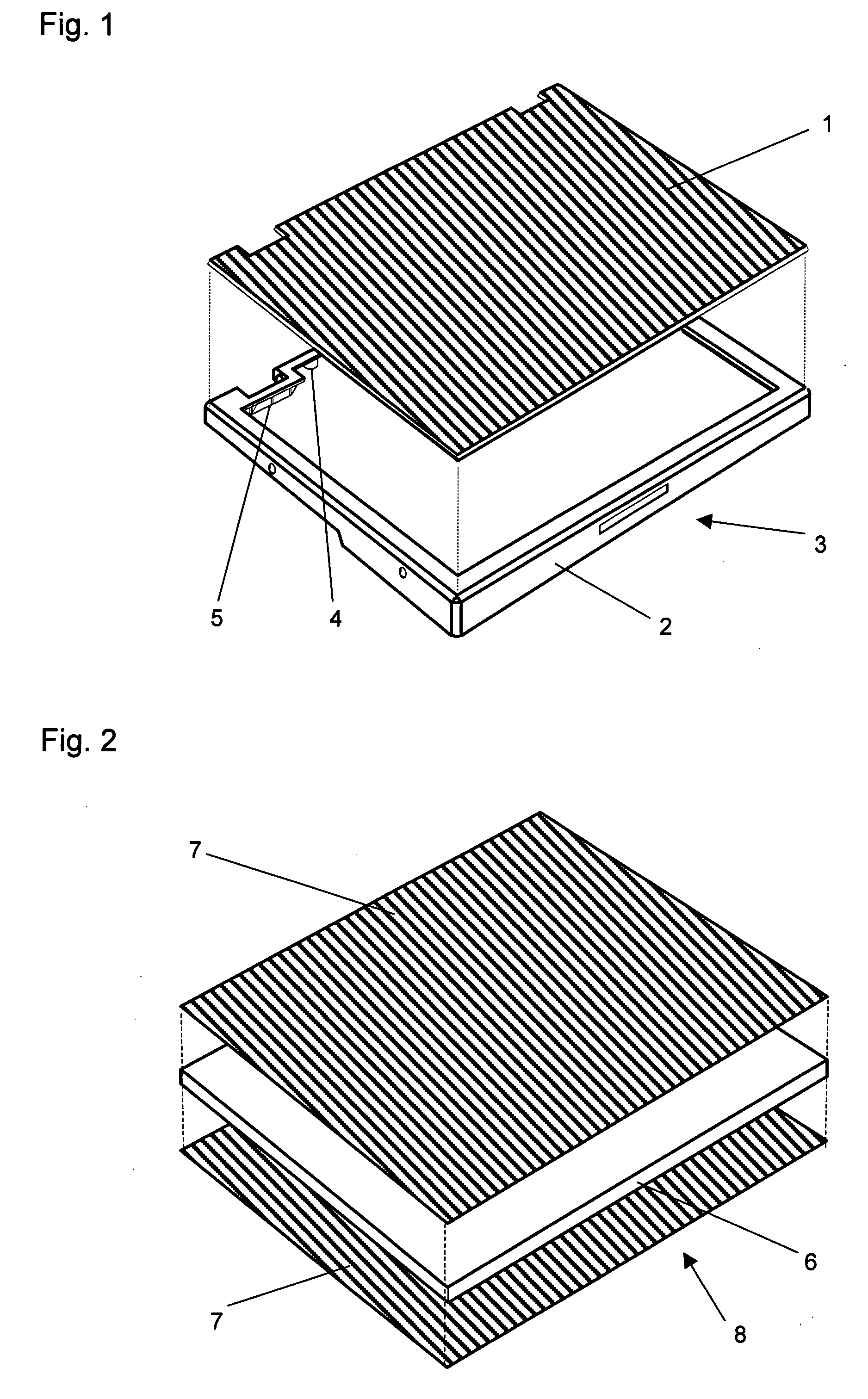Sandwich structure and integrated formed article using the same
a technology of integrated molding and molded articles, which is applied in the direction of synthetic resin layered products, chemistry apparatus and processes, transportation and packaging, etc., can solve the problems of limited application to large molded articles, difficult to meet both thinness and lightweight, and limit the mass production of thin-walled complexly shaped articles, etc., to achieve excellent mechanical properties, excellent mass productivity, and production can be performed very economically
- Summary
- Abstract
- Description
- Claims
- Application Information
AI Technical Summary
Benefits of technology
Problems solved by technology
Method used
Image
Examples
reference example 1-1
[0202]Pellets of a polyamide resin (CM8000 quaternary copolyamide 6 / 66 / 610 / 12, melting point 130° C., produced by Toray Industries, Inc.) were processed into a film (F-1) having a size of 350×350 mm and a unit weight of 50 g / m2.
reference example 1-2
[0203]Pellets obtained by melt-kneading 30 wt % of an acid modified polypropylene resin (YUMEX 1010, acid value about 52, melting point 142° C., produced by Sanyo Chemical Industries, Ltd.) and 70 wt % of polypropylene resin (J229E, melting point 155° C., produced by Mitsui Chemicals, Inc.) at 200° C. using a double-screw extruder (TEX-30α) produced by The Japan Steel Works, Ltd., were processed into a film (F-2) having a size of 350×350 mm and a unit weight of 30 g / m2.
[0204]Meanwhile, the pellets were preheated at 160° C. for 8 minutes and their melt viscosity was measured at a load of 10 kgf using capillary rheometer CFT-500D produced by Shimadzu Corporation and found to be 185 Pa·s.
example 1
[0205]From a prepreg in which a group of unidirectionally arranged carbon fibers was impregnated with an epoxy resin (thermosetting resin) (“Torayca (registered trademark)” Prepreg P3052S-12 produced by Toray Industries, Inc. and “Torayca (registered trademark)” T700S were used, carbon fiber content 67 wt %, fiber weight 125 g / m2), four prepreg sheets having a size of 350×350 mm were cut out to have a predetermined form. These sheets were used to obtain a laminate comprising 0 degrees / 90 degrees / film (F-2) / core component / film (F-2) / 90 degrees / 0 degrees / film (F-1) in reference to the fiber direction. As the core component, “EFCELL (registered trademark)” RC2010 (closed cell polypropylene foam, thickness 1 mm, specific gravity 0.48) produced by Showa Denko K.K. was used.
[0206]Then, as a releasing film, one each “Tedlar (registered trademark)” film produced by Du-Pont Toray Co., Ltd. was disposed at the top and bottom of the laminate, and the laminate was set on a SUS flat plate for pr...
PUM
| Property | Measurement | Unit |
|---|---|---|
| Temperature | aaaaa | aaaaa |
| Length | aaaaa | aaaaa |
| Fraction | aaaaa | aaaaa |
Abstract
Description
Claims
Application Information
 Login to View More
Login to View More - R&D
- Intellectual Property
- Life Sciences
- Materials
- Tech Scout
- Unparalleled Data Quality
- Higher Quality Content
- 60% Fewer Hallucinations
Browse by: Latest US Patents, China's latest patents, Technical Efficacy Thesaurus, Application Domain, Technology Topic, Popular Technical Reports.
© 2025 PatSnap. All rights reserved.Legal|Privacy policy|Modern Slavery Act Transparency Statement|Sitemap|About US| Contact US: help@patsnap.com



